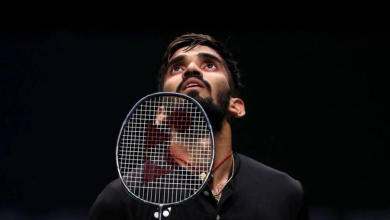How Japan football achieved the Miracle of Doha

In the early 1990s, Brazilian legend Zico returned from a short sabbatical to end his playing days in Japan with a nondescript club that would later be named Kashima Antlers. Money was indeed a motivator but Zico went there also because of a genuine willingness among the Japanese players to learn.
Sometimes, Sebastian Moffett – the author of Japanese Rules – noted, it went a little too far. After matches, when Zico broke down the moves and pointed out the makes, the local players would jot down every word of his pinpoint analysis. “A few minutes before the next match, they would take out these notes and start revising, as if for a test,” Moffett wrote in the Guardian in 2002.
There were times when Zico lashed out at his teammates for taking defeats too lightly and, while doing so, he would ins that his translator, too, yelled so that the words and the tone weren’t lost – a little bit like Herve Renard and his translator during the half time dressing down Saudi Arabian players received against Argentina.
These nuggets give fascinating insights into Japanese football back in the 90s – there was curiosity, and great attention to detail but there was also a total lack of desire to win.
Thirty years on, Japan continues to be obsessed with details rather than being consumed the outcome. There is, however, a burning desire to win. Nothing illustrated this better than Kaoru Mitoma’s desperate attempt to keep the ball, which was rolling over the line, in play and cut it back for Ao Tanaka to score.
” id=”yt-wrapper-box” >
The goal showed that at least in football, lightning can strike twice – days after beating Germany, Japan stunned Spain to top Group E and set up a Round-of-16 clash with Croatia. Six months ago, when draws were made for the World Cup, few would have placed a bet on Japan squeezing out of a group that had the 2010 and 2014 world champions, let alone beating them both and topping it.
Yet, here they are. Rewarded for being patient in a sport where patience isn’t regarded as a virtue; rewarded for adopting a tedious bottom-up approach to development when countries often look for lazier way outs; rewarded for, well, being quintessentially Japan.
Modern-day international football can be split, for convenience’s sake, into three broad categories – countries that have an established culture; nations that tap into diaspora population or even willing to naturalise foreign talent as a short-term fix that helps them get some flash-in-the-pan results; and then there are countries like Japan.
Among the many shops that add to the sights and sounds of Shinjuku, the bustling Tokyo area that’s a business drict the day and transforms into a neon-lit entertainment hub after the sun goes down, one stands out in particular – a tiny store close to the train station from which retro football shirts jut out. There’s Cruyff’s Barcelona colours to Beckham’s United and everything in between.
Sharing the space is the jersey of Zico’s Kashima Antlers and a dozen other J-League clubs.
Thirty years ago, the J-League was formed with this vision – enabling clubs to share space with top European leagues.
Japan fans celebrate outside the stadium after the match as Japan qualify for the knockout stages. (REUTERS/Issei Kato)
The league, back then, had just 10 teams. Today, after decades of hard work to build a pyramid, the number of teams across the top three divisions has increased from 10 to 60, covering roughly 80 per cent of the country. The amateur players – who’d take notes of every little thing the likes of Zico, Dunga, Jorginho, Ramon Diaz, Toto Schillaci, Gary Lineker and the rest said – blossomed into thorough professionals.
The young players who once did not get a chance to play in their own league – largely because of the culture to respect seniority in Japan – are now shining not just domestically, but also in Europe. In 2002, when Japan co-hosted the World Cup with South Korea, only four players in the squad were playing abroad. In Qatar, 19 out of the 26 play in European leagues – there are more players in this squad who play in German Bundesliga (8) than in the J-League (7).
And so, although Japan have been consently playing the World Cup since 1998, this time more than ever they went out there with a sense of being equals with the Germans and the Spaniards. They wouldn’t be mere pushovers.
All this is a consequence of a multi-fold vision. In 1992, when the league was established, a hundred-year plan was set to win the World Cup in 2092. Along the way, several short-term targets were set.
Expanding the league’s footprint was one of them. That, in turn, led to an increase in the player pool and to train them, a programme to develop coaches was initiated; a plan rooted in the fact that it’s often home-grown coaches that have won their countries the World Cup. Hajime Moriyasu, who’s outwitted the likes of Hansi Flick and Luis Enrique, is a product of this thinking.
Experts, like American coach Tom er who is credited with transforming Japan’s youth coaching structure, instilled a philosophy where kids were first taught to master ball control and then worry about tactics.
It meant the Japanese players, over time, became proficient in close control and one-on-one situations like stepovers and body feints. With speed already as their biggest ally, these skills transformed the players into Asia’s best, which was underlined when Japan won the continental championship four times between 1992 and 2011.
Once the J-League was established as the ‘Premier League of Asia’, the focus shifted to developing players who can flourish in Europe. The clubs there have shed the stereotype of the Japanese not being physically strong enough to compete while also realising that signing them also made financial sense – they sign them for cheap and sell for potentially huge profits. But the numbers aren’t nearly enough.
And so, as the next step in their progression, Japan – in 2016 – declared its ambition to become an export hub of footballers, with the year 2030 set as a target. They called it ‘Project DNA’ – Developing Natural Abilities.
Six years ago, Japanese football officials went on a fact-finding tour across Europe and tied up not with the biggest football clubs, who’d lend their brand value, but joining hands with teams that have the best academies. West Ham United, for instance.
It might be too early to say that Project DNA is the reason why so many Japanese players are now making their presence felt in European leagues. But then, it wouldn’t be the Japanese way to expect instant success. In an industry where nations go for glitz and glamour to create a football as if it’s like two-minute noodles, Japan have shown the biggest act of bravery in football development is to be boring.







